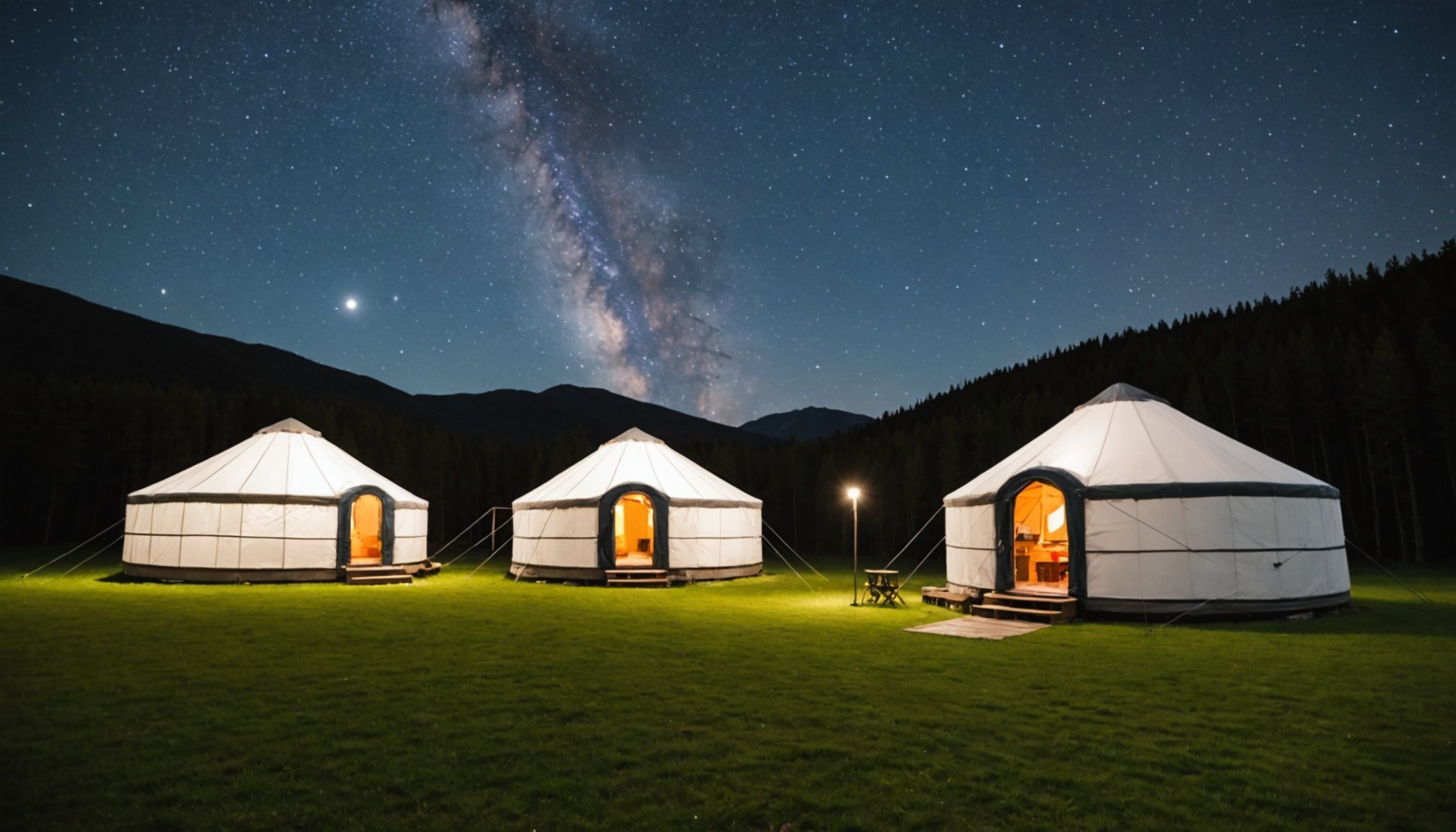Camping is a timeless outdoor activity that offers an escape from the hustle and bustle of daily life. Traditionally, this has involved pitching a tent and braving the elements, but in recent years, a new option has emerged: the yurt. These circular, semi-permanent structures have origins in Central Asia but are making waves in the camping world due to their unique advantages over traditional tents. In this article, we will explore the myriad benefits of camping in a yurt compared to a conventional tent, providing insights into why you might choose this comfortable and innovative approach to outdoor living.
Comfort and Space
When comparing camping in a yurt to a traditional tent, one of the most noticeable differences is the level of comfort and space. Tents, while convenient and easy to carry, often come with limited headroom and confined living quarters. In contrast, yurts are designed to maximize space, offering plenty of room to stand, move, and relax without constantly bending or crouching.
In the same genre : How to effectively communicate with fellow campers for a harmonious trip?
Enhanced Living Space
Yurts often feature open-plan layouts, allowing for better air flow and spaciousness, which can be a game-changer for those who find tents too cramped. The circular nature of a yurt provides a more harmonious and functional living area, with nooks for sleeping, cooking, and lounging.
Furnishing Flexibility
Unlike traditional tents, yurts can accommodate full-size furniture, offering a level of comfort akin to a small cottage. This means you can furnish your temporary home with beds, tables, and chairs, transforming your camping experience from roughing it to living in style.
Also to read : What local events and markets can you explore while camping in rural UK?
Weather Resistance
Yurts are typically built with durability in mind, using materials that withstand various weather conditions. Their robust structure and insulating properties make them suitable for both hot summers and cold winters, providing a more stable and enjoyable camping environment year-round.
Environmental Impact
For environmentally-conscious campers, the choice between a tent and a yurt may hinge on their respective environmental impacts. While traditional tents are generally lightweight and made from synthetic materials that can be harmful to the environment, yurts often boast more sustainable credentials.
Sustainability
Yurts are often constructed from natural materials such as wood and canvas, which can be sourced sustainably. These materials are not only biodegradable but also often require fewer resources to produce and transport compared to synthetic tent materials.
Minimal Footprint
Due to their semi-permanent nature, yurts can be installed with minimal ground disturbance, reducing their impact on the natural environment. This contrasts with tents, which often require clearing and flattening of the ground, potentially disrupting local ecosystems.
Reusability and Longevity
The longevity of a yurt also contributes to its environmental benefits. Unlike tents that might last a few seasons, a well-maintained yurt can provide years of service, reducing the need for frequent replacements and, consequently, the environmental footprint associated with manufacturing.
Convenience and Accessibility
The rising popularity of yurts is partially due to their convenience and accessibility. While setting up a tent can be labor-intensive, yurts offer a more streamlined process, especially regarding preparation and setup.
Ease of Setup
Yurts can often be pre-assembled at the campsite, allowing campers to avoid the hassle of pitching poles and securing guy lines. This makes them particularly attractive for those who might find traditional tent setup challenging or tedious.
Accessibility for All
The accessibility features of yurts make them appealing to a diverse range of campers, including families with young children, the elderly, or those with mobility challenges. The step-free entrance and spacious interior can accommodate wheelchairs, strollers, and other necessary equipment seamlessly.
Year-Round Usability
Unlike tents, which are often restricted to fair-weather use, yurts are designed for year-round camping. Their sturdy construction and all-weather capabilities enable campers to enjoy the outdoors regardless of the season, broadening the scope for memorable experiences.
Cultural and Aesthetic Appeal
One of the less tangible yet equally important benefits of camping in a yurt is its cultural and aesthetic appeal. The unique shape and history of yurts introduce an element of novelty and intrigue to the camping experience, drawing on a rich heritage.
Historical Significance
Yurts carry a sense of historical depth, connecting campers to thousands of years of tradition. Originally used by nomadic people in Central Asia, they represent not just a shelter but a way of life that emphasizes simplicity and harmony with nature.
Aesthetic Qualities
The design of a yurt, with its circular form and striking frame, offers an aesthetic departure from the angular lines of a tent. This can enhance the visual appeal of your campsite, creating a picturesque and inviting atmosphere.
Cultural Immersion
Camping in a yurt provides a unique opportunity for cultural immersion, offering a glimpse into a lifestyle that prioritizes community, adaptability, and the natural world. This aspect of yurt camping can enrich your experience, making it more than just a retreat but a journey into a different perspective on living.
Camping in a yurt versus a traditional tent offers distinct advantages that cater to those seeking comfort, sustainability, and an enriching outdoor experience. While conventional tents have their place in the world of camping, the yurt stands out as a versatile, environmentally-friendly, and culturally rich alternative that can enhance your connection with nature. As you plan your next camping adventure, consider the benefits of a yurt—it may just redefine your understanding of what it means to camp and explore the great outdoors.













